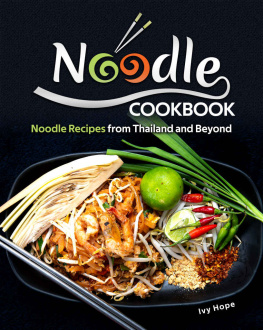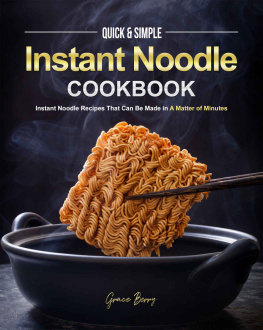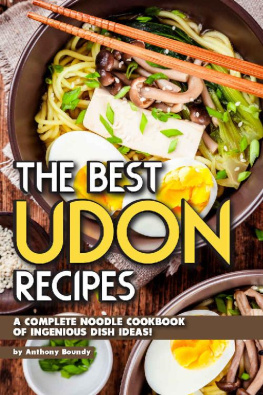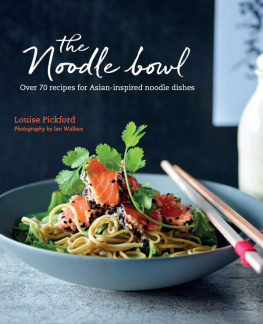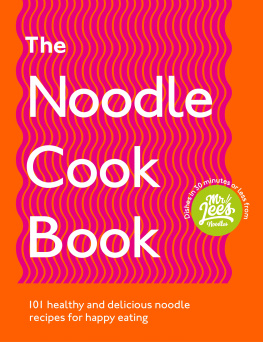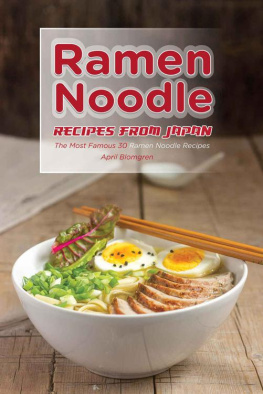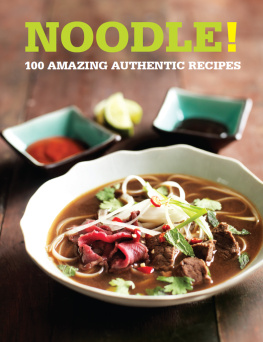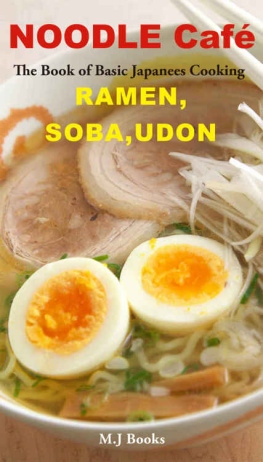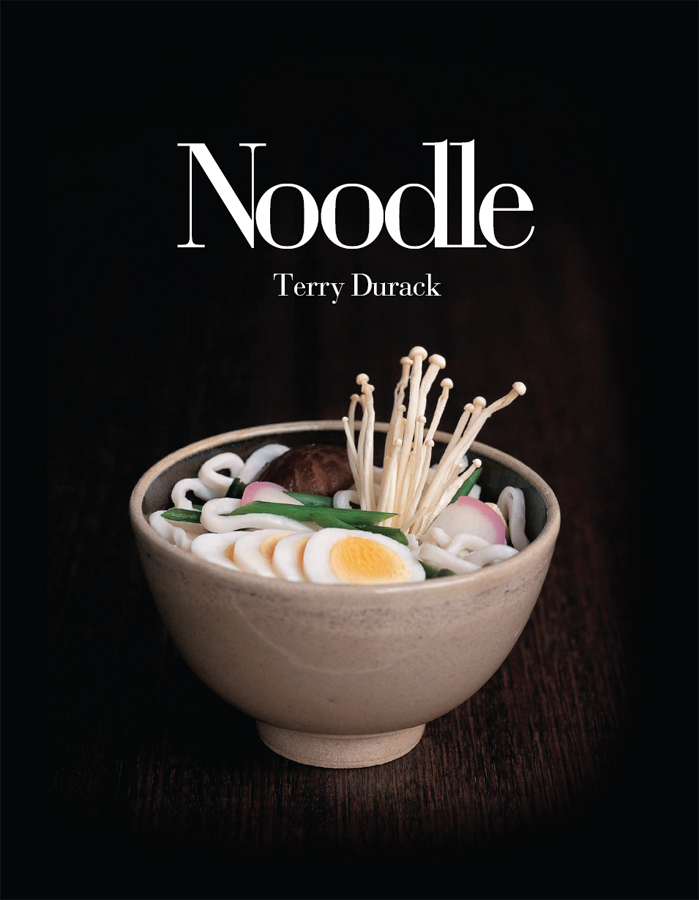Contents
Long life and happiness
To witness the birth of a noodle is a glorious thing.
I have listened, spellbound, as an 85-year-old noodle chef in Beijing told me why the act of making noodles helped him make sense of the world. As he spoke, he effortlessly stretched a soft, white blob of dough into a thick skipping-rope affair which began to dance before my eyes. It twirled and furled and stretched and strained until he deftly passed one end of the dough to his other hand, causing the rope to twist upon itself.
Back and forth he folded the rope upon itself until, for no reason apparent to mere earthlings, it split into noodles. A little twist, and it split into even finer noodles. And so it went, until the man had produced noodles so fine they could pass through the eye of a needle.
I have watched Mongolian noodle-makers slam their hand-pulled noodles so hard on their work tables that I feared the wood would splinter.
I have witnessed master soba chef Yoshi Shibazaki push and prod and roll his buckwheat dough until he was weak with the effort.
I have watched antique machines in outer suburbia steaming rough mixes of rice flour and water until they turned into a bridal white, gelatinous dough that was then stretched into shimmering silken sheets, cooled by rattly old fans hanging from the ceiling.
I have plunged my hands well, my whole body into flour in an effort to make my own noodles, ending up with a snow-white kitchen and a small bowl full of the most satisfying noodles in the world.
To all the people who create the noodles of the world, I dedicate this book.
I also make them a pledge: to treat their noodles with the same care, respect and integrity that they have shown by making them in the first place.
This is not a mere grab bag of quick-fix meals for the busy family on the run, even though many of the recipes can be done in a twinkle. There is no east meets west, no oriental pasta, and no garbage. Just great noodle recipes that I have cooked many times over in my long-suffering kitchen. They are recipes with roots; recipes with a tradition and a sense of history that reflect a region, a religion, a way of life, or a season.
Any modern recipes included are still firmly based in the framework of authenticity, and have been created by someone who loves, honours and respects the noodle.
Noodle survival
There are two ways you can use this book. You can start with a noodle, or you can start with a recipe.
Every noodle type comes with its own noodle i-d. Look up the i-d to find out what the noodle is, what it looks like, where it comes from, what its made of, and how to cook it. At the end of every noodle i-d is a guide to recipes that use that particular noodle.
So if you find a pack of noodles in the cupboard and you dont know what to do with them, simply match them to a picture in the noodle i-d and check out the recipes that go with it.
If you already know what you want to cook, then simply look up the recipe, which will tell you the noodle you need. Check the noodle i-d before you go shopping, and youll always cook with the right noodle.
A word on wok-cooking. Always heat your wok first, then add the oil, to prevent food from sticking. When the oil is smoking, add the food. For an authentic flavour, keep your heat up high. It helps to seal the food quickly, as well as imbuing it with the characteristic heat-seared flavour that the Chinese call the breath of the wok.
As for stir-frying, you dont actually stir. Instead, you toss or flip. Use apaddle or broad spoon to get under the food, flick it up and toss it over ontoitself, rather than stirring. Keep the noodles moving at all times, or theymay stick, scorch or stew.
And never put too much in the wok at any one time. Unless you haveindustrial-strength heat and a giant wok, the noodles will sog before theycan heat through. If you want to cook for more than four people, buyanother wok and run two at once.
Its very, very difficult to undercook a noodle. Its very, very easy toovercook a noodle. When boiling or soaking your noodles to prepare themfor cooking, keep them al dente , so they are still firm to the bite especiallyif they are then going into a soup or stir-fry.
Above all, trust your instincts. If you want to add more garlic, add moregarlic. If you want to leave out the chilli, leave out the chilli (but youll gostraight to hell when you die). Taste as you go. All you have to do is eatnoodles, for long life and happiness.
Noodle i-d Wheat noodles
What
Meet the four-door family sedan of the noodle world. These thin, pale, eggless strands are go-anywhere, do-anything noodles, blessed with an inbuilt toughness and a heart of gold. Available in dried and fresh form, they are usually sold dried, even in China. If they had one home, it would be northern China, where most of them end their days in a happy stir fry. Wheat noodles are also available flavoured with prawn or crab, which sounds like a bad idea. Far better to add your own fresh prawn or crab.
Why
Because wheat noodles are the noble emperors of the stir fry. They work with all sorts of textures and flavours, soaking up juices like a sponge, and theyre tough enough to withstand domestic abuse.
Where
Burma: kaukswe. China: gan mian (Mandarin) and kon mein (Cantonese).
Japan: udon, somen and ramen are close cousins (see ).
Korea: gooksu. Malaysia: mee. Philippines: miswa. Thailand: mee. Vietnam: mi soi.
Which
Look for pale dried noodles sold either in rounds, like mini knitting yarns (shown), or in square blocks. Fresh wheat noodles are sold in plastic bags and should be kept in the refrigerator and used within a week of buying.
How
Dried: Cook in plenty of boiling water for about 4 minutes.
Rinse in cold water, drain and reserve until needed.
Fresh: Cook in plenty of boiling water for about 2 minutes.
Rinse in cold water, drain and reserve until needed.
Whatever
While egg noodles are more giving in texture and a little richer in flavour, they can nevertheless be substituted for wheat noodles. So if youre not sure whether your noodles are wheat or egg, dont worry about it too much: just keep cooking.
Recipes
.
Noodle i-d Egg noodles
What
This is the closest any noodle gets to taking over the world. Seductive, slippery egg noodles stretch from one side of Asia to the other, and joyously cross the boundaries of breakfast, lunch and supper. Its the difference between fresh, silken tagliatelle made with eggs, and eggless spaghetti made with tough durum wheat. Made from wheat flour and egg, they come in various shapes and sizes (see also ), but here we want the classic thin, round variety to throw into soups, to stir fry, and even to deep fry. If you find thin flat egg noodles, either dried or fresh, save them for soups.
Why
Because theyre instant texture food, mouth-filling and bouncy, with a satisfying chew. Because their slipperiness adds a new dimension to the humblest of bowling companions. And because they absorb whatever they are given, like an eagerstudent, playing out the flavours of stocks and sauces with every mouthful.


